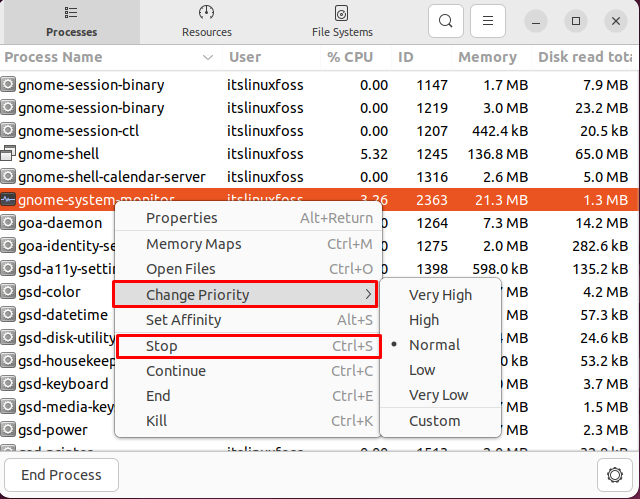FPS stands for “frames per second” which is a measure of the frequency at which an image is displayed in a video stream or animation. In the context of Linux, FPS is used to measure the performance of various multimedia applications, such as video games, video playback software, and graphics applications. A high FPS means that the graphics and video are displayed more frequently, resulting in a smoother and more fluid user experience.
This article will demonstrate all possible ways to boost FPS in Linux. The content of this guide is mentioned below:
- Upgrading Hardware
- Optimizing System Settings
- Updating Drivers
- Using Game-Specific Optimization Tools
- Enabling Hardware Acceleration
- Disabling Unnecessary Services
- Using a Gaming-focused Linux Distribution
How to Boost FPS in Linux?
The boosting FPS improves the performance and smoothness of multimedia applications and games. Here are several methods in detail to boost FPS in Linux:
Method 1: Upgrading Hardware
Upgrading components such as the graphics card, CPU, and RAM can significantly improve FPS. A dedicated graphics card is essential for good performance in most games, and a higher-end card will generally result in higher FPS such as “Nvidia GeForce RTX 4090”, “Radeon RX 7900 XTX”, “AMD Radeon RX 6700 XT”. A fast CPU and adequate RAM will also help to ensure smooth performance such as “Intel Core i9-13900K, “Intel Core i7-13700K” and “AMD Ryzen 7 7700X” with 16GB or 32GB RAM.
Method 2: Optimizing System Settings
Adjusting settings such as display resolution, graphics quality, and v-sync can help improve FPS. Lowering the display resolution or reducing graphics quality can reduce the demand for the graphics card and result in higher FPS. Disabling v-sync (vertical synchronization) can also help to increase FPS but may cause screen tearing.
Method 3: Updating Drivers
Installing the latest graphics card drivers can help improve FPS by fixing bugs and adding performance optimizations. Make sure to regularly check for updates from the manufacturer’s website or through a package manager such as “APT”, “YUM”, “DNF”, or “RPM”.
Method 4: Using Game-Specific Optimization Tools
Some Linux games come with built-in tools to adjust settings and improve FPS. These tools can be used to tweak settings such as graphics quality, resolution, and others to improve performance.
Method 5: Enabling Hardware Acceleration
Hardware acceleration is a feature in Linux that enables the GPU to perform more demanding tasks, such as rendering graphics and video. This can significantly improve FPS, especially in resource-intensive applications such as games. To enable hardware acceleration, make sure the required drivers are installed and enabled in your Linux distribution.
Method 6: Disabling Unnecessary Services
Disabling or reducing the number of background services and applications running on your system can free up resources and improve FPS. To do this, users can utilize the “Task Manager” or “System Monitor” to see what processes are running and adjust their priority or disable them if necessary.
Method 7: Using a Gaming-focused Linux Distribution
Some Linux distributions are specifically optimized for gaming, such as “SteamOS” and offer improved performance out of the box. If you’re serious about gaming on Linux, users can consider one of these distributions.
Note: These are some of the most effective methods to boost FPS in Linux, but results may vary depending on your specific hardware and software configuration.
Conclusion
To boost FPS, users can “upgrade hardware”, “optimize system settings”, “update drivers”, utilize “game-specific optimization tools” and “disable unnecessary services”. These methods enhance the smoothness and responsiveness of graphics and video performance. This guide has demonstrated all essential methods to boost the FPS in Linux.

